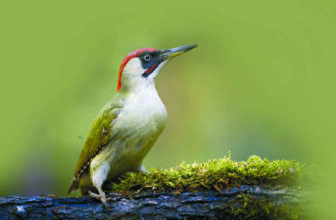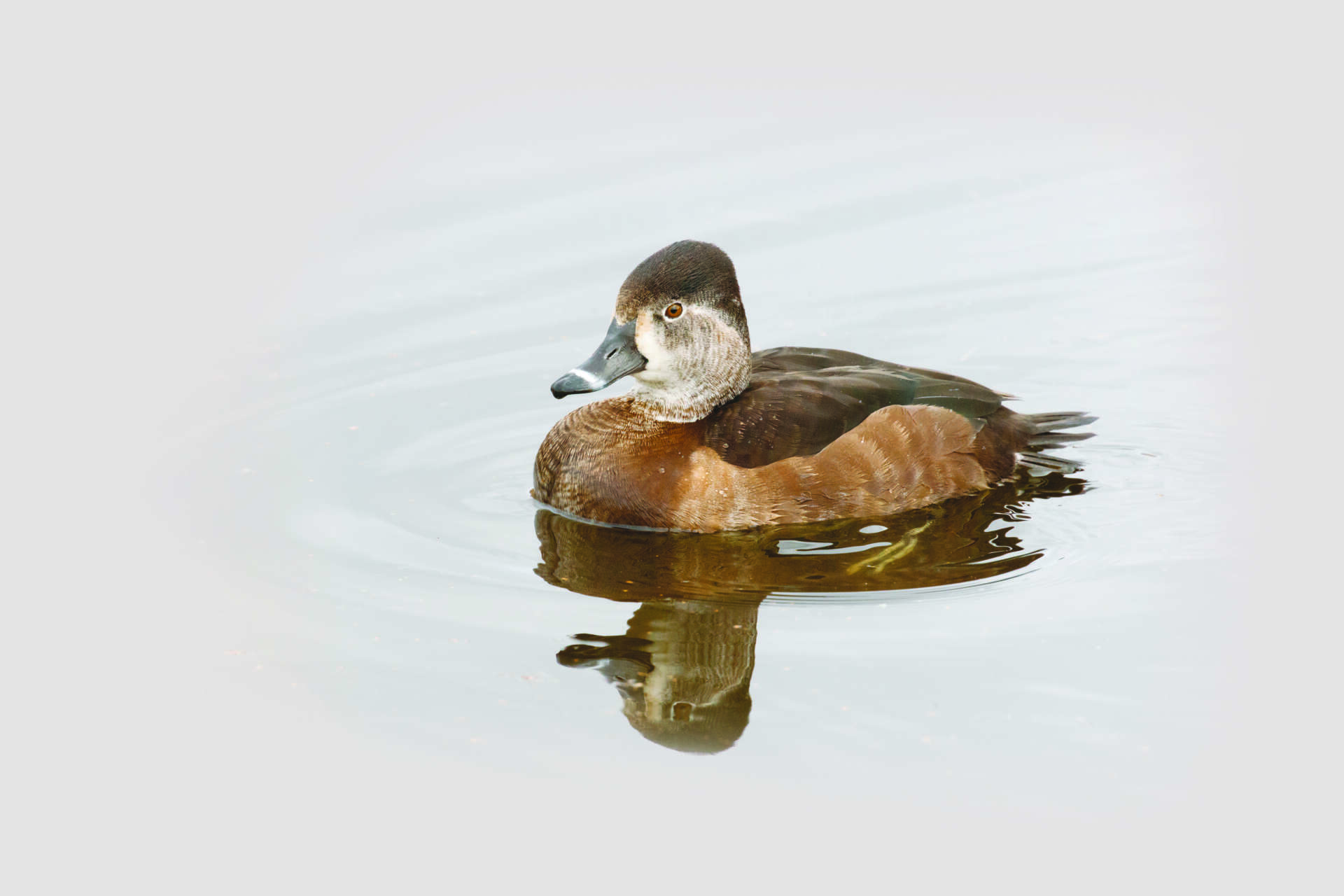
The poor January weather nearly persuaded me to stay indoors all day – but after lunch I got a hunch.
Two days earlier I’d ventured out in the mist and, on a small iced-bordered pond, I saw just six ducks. Two were the usual common Mallards but nearby were a couple of other scarce local species, a pair of Pochard and two male Teal, already dressed for summer.
So I thought it might be worth going back to check they were still there. Maybe the wintry weather had brought in more. It felt like I had a duty to check, just in case.
Off I set and as I approached the site there appeared to be no ducks present whatsoever. What a waste of time. There were just a few Coots and a Little Grebe on the far edge. ‘That’s birding,’ I thought, and almost turned round to trudge back.
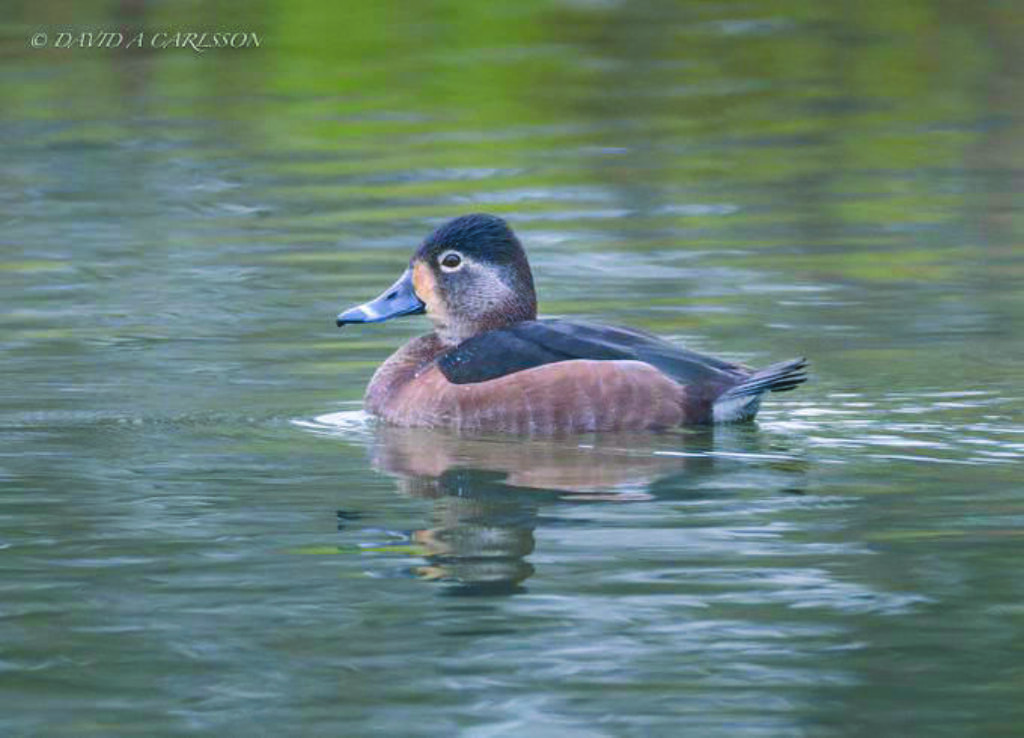
But then I saw another shape under an overhanging tree at the far end. At first its identity was a mystery. At some distance it appeared as a deep brown blob in the black reflection of the trees. I edged cautiously closer and soon realised it was a duck, possibly a female Tufted Duck, which are quite common around Cranleigh.
But this one appeared to have something orangey, perhaps an old bit of wet reed, wrapped around the base of its bill. The bird began swimming in my direction and soon I had that most treasured emotion experienced all too infrequently by searching birders: ‘It can’t be – but it is!’
I was looking at the first ever local record of a Surrey rarity and national vagrant that had flown all the way from North America – a female Ring-necked Duck.
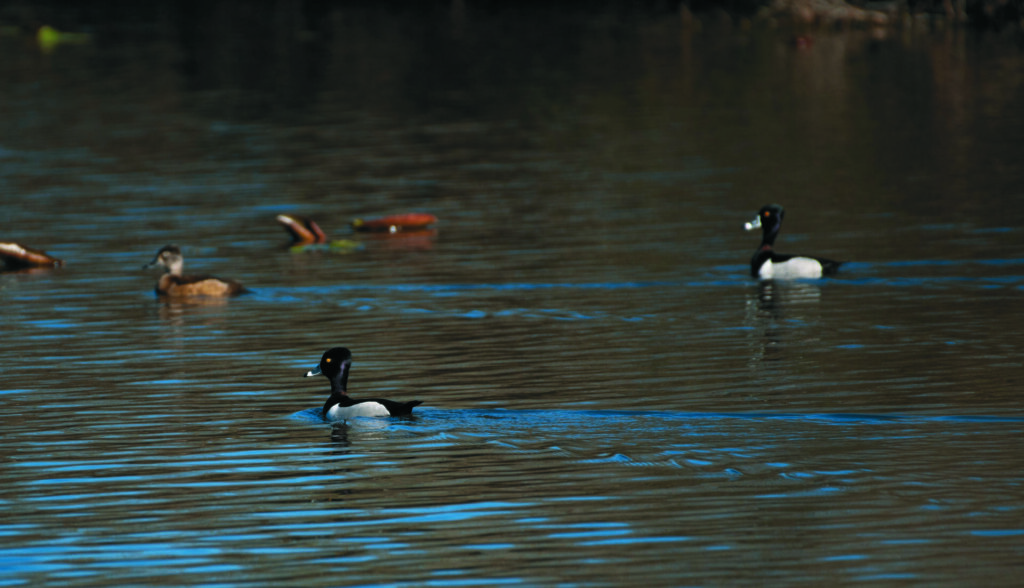
It was one of around 40 apparently storm blown to the British Isles in the last few months while migrating south to as far as Costa Rica. Given the freezing wind, I rather wished I were watching it there instead.
Amazingly, this was not the first time I had found one in Cranleigh. Just four days short of 29 years previously I was fortunate to have discovered only the third record of Ring-necked Duck for the county. This was a far more distinctive drake and wearer of the hard-to-see cinnamon brown ‘scarf’ around its neck that gives the species its name. I could hardly believe my luck at finding one again after all this time.
It had not been recorded in Surrey for five years but there has been an increase in sightings over the intervening years between my two discoveries and this was now the 17th. Greater birdwatcher awareness and range expansion in North America are two contributory factors.
As it swam nearer, showing its distinctive peaked head and its ‘spectacles,’ I realised the orangey reed appearance at the base of the bill was a strip of lighter feathering at the front of its head.
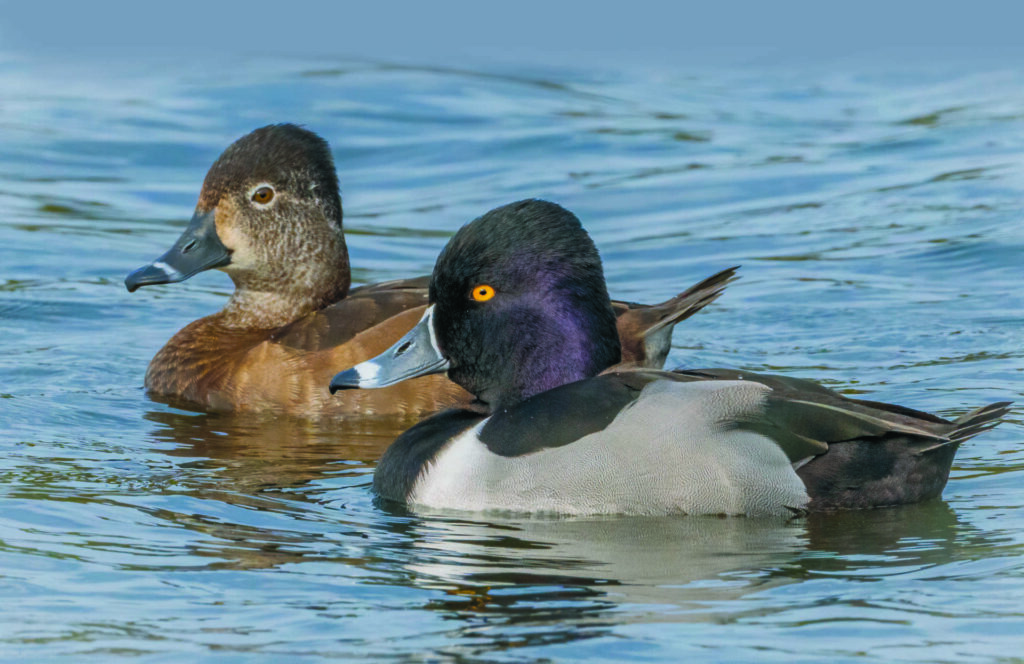
The dumpy stray was generally shy and, although a diving duck, it failed to do so in over an hour of watching. It spent much of the time touring the water and cocking its stubby tail upwards at a 45-degree angle. I noted its distinctive peaked head and its spectacles.
I’m grateful to my friend Dave Carlsson for the brilliant accompanying photo of the bird, which saves me writing in detail about its ‘orange’n chocolate’ tones.
This pretty little visitor was still present the next morning but its stay was infuriatingly cut short when flushed by off the lead dogs before many birders could catch up with it. We never expected to see it again but late in February I had another surprise. It was back. That’s birding!
In the intervening weeks it had made friends with some of the locals, two male and a female Tufted, and they were diving constantly to feed.
Delighted birders arrived from far afield to add this rarity to the lists – and went away whistling Yankee Doodle.



